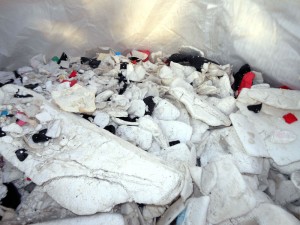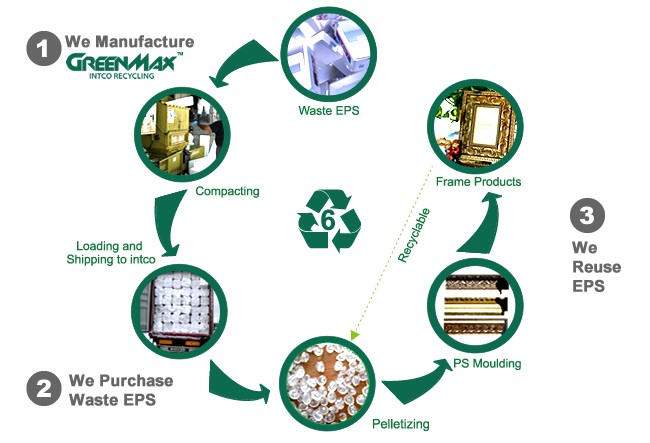Polystyrene foam doesn’t biodegrade like organic material. Instead, it breaks down into small pellets that are hard to clean up—and are nicely bite-sized for fish and fowl. It’s potentially poisonous for marine creatures and the humans who eat them. Polystyrene absorbs toxins in the water, such as DDT, a carcinogenic pesticide still in use outside the United States, and PCBs, which are also suspected carcinogens.
Many people feel some urgency to get the foam ball rolling because he believes it takes hundreds of years to biodegrade foam cups and containers in your average landfill. While container companies may take issue with that number—they all agree, it’s time to take the recycling of polystyrene, better known as Styrofoam/EPS, more seriously.
The EPS Recycling Rate Report shows 34% of polystyrene was recycled till now. And it is a quite small quantities which is not match the application rate of polystyrene. Polystyrene often has large volume which is hard to transport to landfill or recycle. So the first important step of polystyrene recycling is to find a professional machine to reduce the volume.
GREENMAX is a polystyrene foam recycling specialist. It can provide different kinds of solutions to dispose the bulky foam materials. It has machines that can work at a ratio of 50:1 or 90:1. It means if you compress or melt 50kg or 90kg loose Styrofoam materials, you will both get only 1kg recycled blocks or ingots. By doing this , people will save much storage space and transportation costs.
The recycled blocks or ingots can be stacked on a pallet and sold for recycling. GREENMAX machines have a low energy consumption. And it continues to develop solutions to meet demands for the different sizes and shapes of foam materials. To help people recycle polystyrene materials , GREENMAX is always on its way to innovation.

